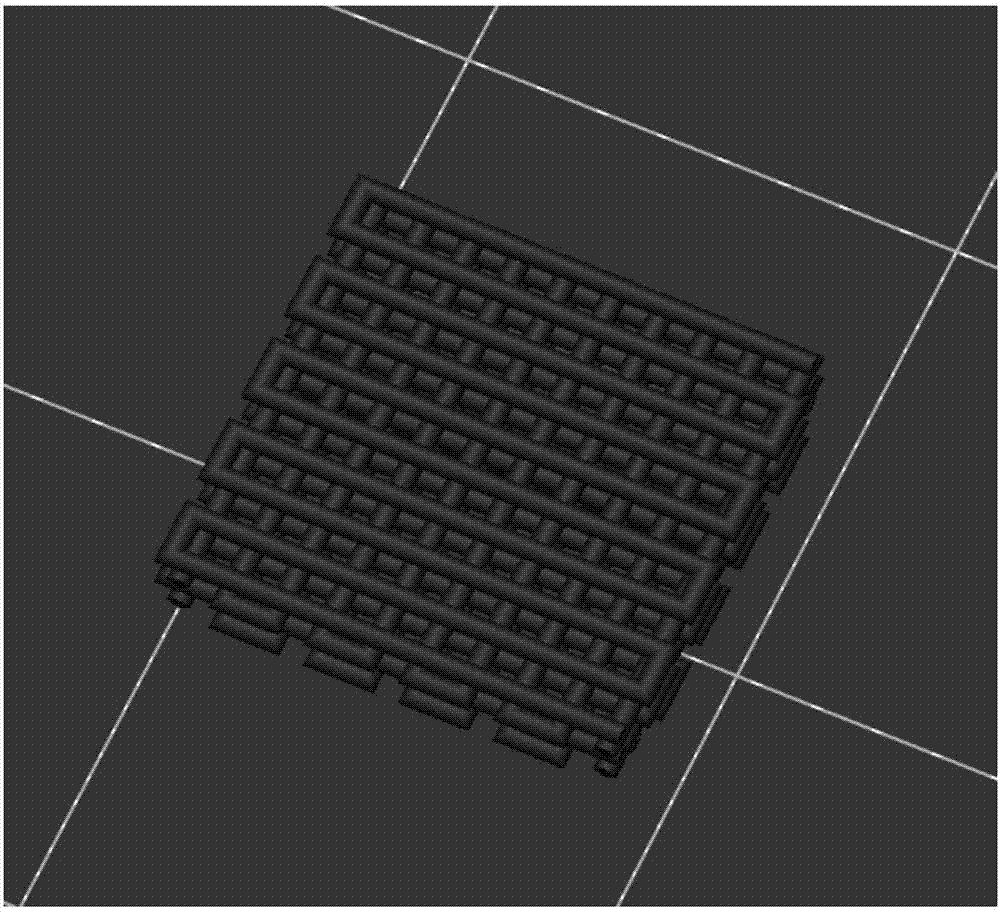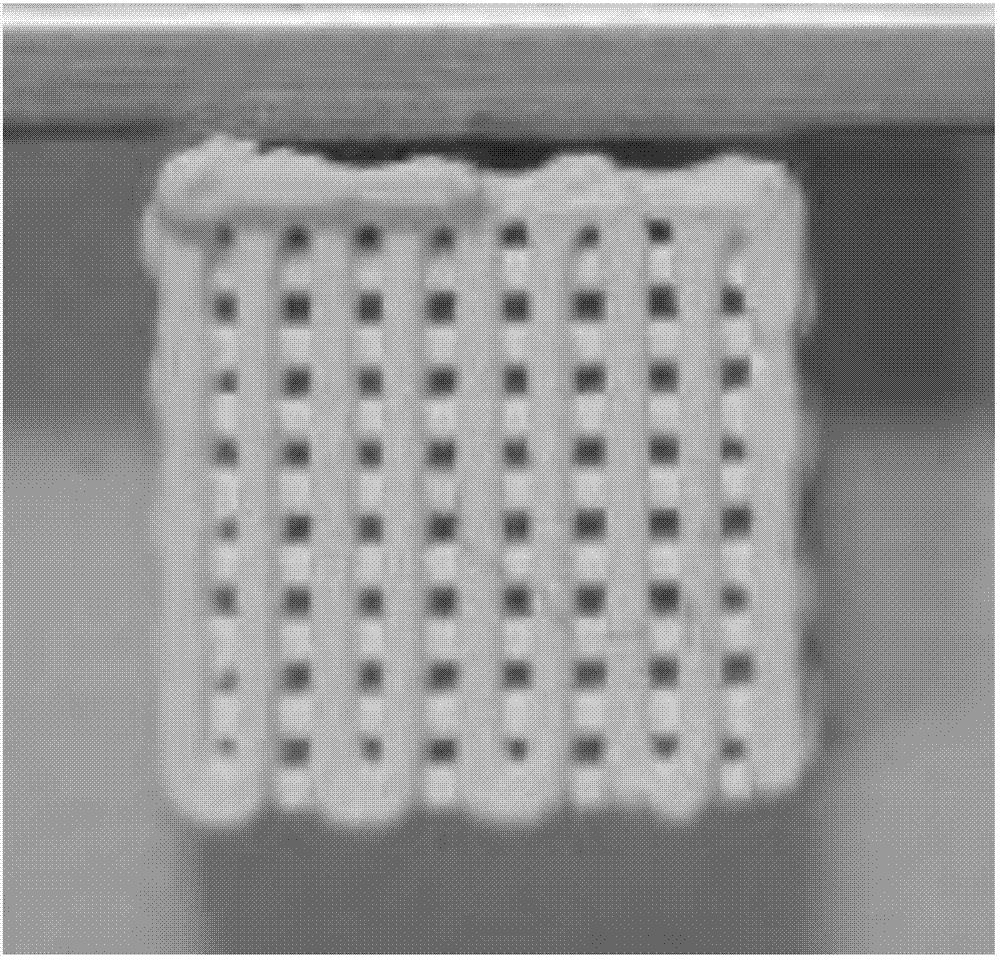3D printed sodium alginate-collagen type I-ceramic composite scaffold and preparation method and application thereof
A sodium alginate and 3D printing technology, which is applied in medical science, prosthesis, additive processing, etc., can solve problems such as the inability to bear the huge stress of the knee joint, poor mechanical properties of fibrocartilage, and the inability to guarantee long-term curative effect, etc., to achieve improved Chondrocyte proliferation and ALP activity, reduce chronic inflammatory response, and facilitate cell adhesion
- Summary
- Abstract
- Description
- Claims
- Application Information
AI Technical Summary
Problems solved by technology
Method used
Image
Examples
Embodiment 1
[0038] 1) after the calcium magnesium silicate powder is processed by wet ball milling, the ultrafine powder with particle size not exceeding 5 μm is obtained, the ultrafine powder is dispersed in deionized water, and stirred at normal temperature for 1 hour, and then 1 The collagen powder was stirred at room temperature for 5 minutes, and finally sodium alginate was added and stirred at room temperature for 15 minutes to make a hydrogel as a composite ink;
[0039] The mass fraction ratio of sodium alginate: collagen type I: calcium magnesium silicate is 6:2:5.
[0040] The calcium magnesium silicate is magnesium-doped wollastonite, and the molar percentage of magnesium replacing calcium in the magnesium-doped wollastonite is 10%.
[0041] 2) The hydrogel is placed in a three-dimensional printer and printed using a three-dimensional printer device. The length of the scaffold was 10 mm, the pore size was 300 μm, and the porosity was 43%. During the printing process, 10% calc...
Embodiment 2
[0044] 1) After the β-tricalcium phosphate powder is processed by wet ball milling, an ultrafine powder with a particle size of no more than 5 μm is obtained, the ultrafine powder is dispersed in deionized water, and stirred for 1 hour at normal temperature, and then 1 The collagen powder was stirred at room temperature for 5 minutes, and finally sodium alginate was added and stirred at room temperature for 15 minutes to make a hydrogel as a composite ink;
[0045] The mass fraction ratio of sodium alginate: collagen type I: β-tricalcium phosphate was 6:2:5.
[0046] 2) The hydrogel is placed in a three-dimensional printer and printed using a three-dimensional printer device. The length of the scaffold was 10 mm, the pore size was 300 μm, and the porosity was 43%. During the printing process, 10% calcium chloride was used for spray crosslinking. After printing, the scaffold was soaked in a 10% calcium chloride solution for 10 minutes for further crosslinking to obtain the fin...
PUM
| Property | Measurement | Unit |
|---|---|---|
| particle size | aaaaa | aaaaa |
| length | aaaaa | aaaaa |
| porosity | aaaaa | aaaaa |
Abstract
Description
Claims
Application Information
 Login to View More
Login to View More - R&D
- Intellectual Property
- Life Sciences
- Materials
- Tech Scout
- Unparalleled Data Quality
- Higher Quality Content
- 60% Fewer Hallucinations
Browse by: Latest US Patents, China's latest patents, Technical Efficacy Thesaurus, Application Domain, Technology Topic, Popular Technical Reports.
© 2025 PatSnap. All rights reserved.Legal|Privacy policy|Modern Slavery Act Transparency Statement|Sitemap|About US| Contact US: help@patsnap.com



